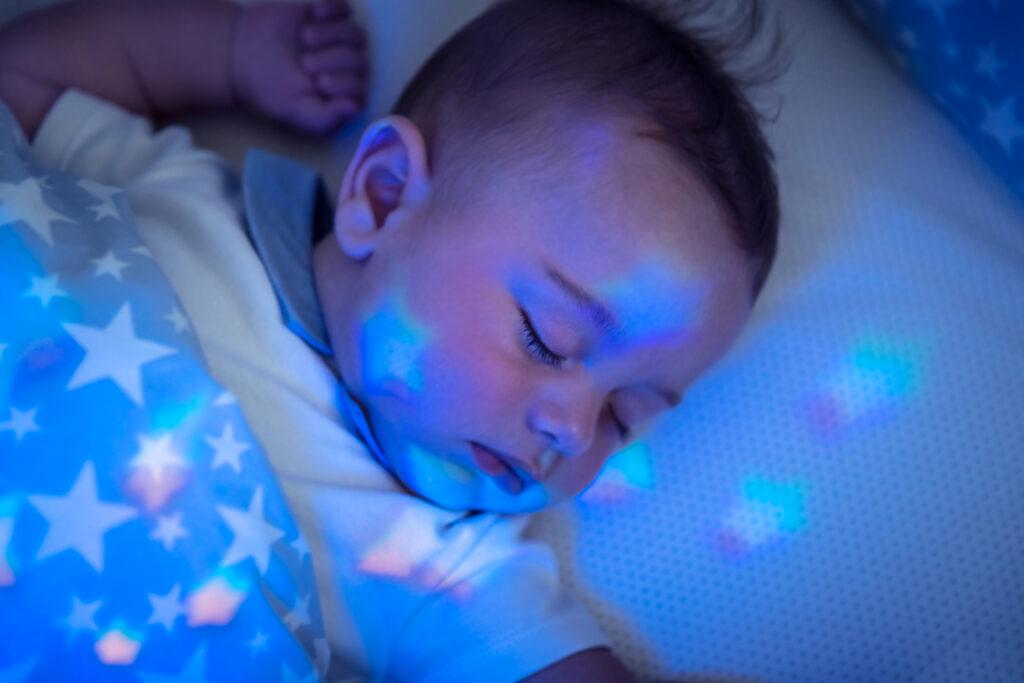
Babies can’t directly communicate their discomfort, so it’s up to us as parents to be attentive to their needs—especially when it comes to nighttime warmth. Understanding how to know if your baby is cold at night can help ensure they sleep comfortably and safely. Let’s dive in and figure out how to know if your baby is cold at night.
What Is the Best Room Temperature for a Baby at Night?
First, let’s talk about the room temperature. Setting the thermostat just right can prevent a lot of nighttime discomforts. The sweet spot for a baby’s room is typically between 68°F and 72°F (20°C to 22°C). This range provides a comfortable environment that helps your baby sleep peacefully without being too hot or cold. Consider investing in a room thermometer to monitor this closely, especially during colder months when temperatures tend to fluctuate.
How To Know If Your Baby Is Cold at Night
So, how exactly do you know if your baby is too cold at night? Since babies can’t tell us, we need to watch for specific cues. Here are the top indicators that your baby might be feeling chilly:
- Cold Chest or Tummy:
The most reliable way to check if your baby is cold is by feeling their chest or tummy. If these areas are cool to the touch, it’s a sign they might need an extra layer or a warmer sleep environment. Don’t rely solely on their hands and feet, as these tend to be naturally cooler than the rest of their body due to immature circulation. - Cool Nose:
Another often overlooked area to check is your baby’s nose. If their nose feels cold, it could be a sign that their overall body temperature is a little lower than it should be. This is a helpful secondary check along with the chest and tummy. - Frequent Night Waking or Restlessness:
Babies who are too cold may not sleep well. If your baby is waking up frequently or seems unusually restless, cold discomfort might be the cause. This is your baby’s way of telling you they’re not comfortable enough to settle into deep sleep. - Pale, Blotchy, or Cool Skin:
If you notice your baby’s skin looking paler than usual, or if it feels blotchy or cool to the touch, it could be a sign that they’re cold. Babies lose heat more quickly than adults, especially through exposed skin, so keep an eye out for these changes. - Lack of Movement:
Sometimes, when a baby is cold, they might become unusually still. While babies do move less during sleep, a lack of normal wriggling or shifting can indicate they’re conserving energy to stay warm. If you notice this along with other signs, your baby may be too cold. - Blue-Tinged Lips or Extremities:
If your baby’s lips, fingers, or toes appear bluish or purple, this is a clear sign that they’re too cold. While this is less common, it’s important to address it immediately by warming up the baby’s environment and their clothing.
What to Do If Your Baby Is Cold at Night
Once you’ve identified that your baby is cold, there are several steps you can take to warm them up while ensuring they remain safe during sleep:
- Adjust Their Sleepwear: If your baby is cold, adding an extra layer of sleepwear can help. Consider using a breathable cotton sleep sack or wearable blanket designed to provide warmth without the risks associated with loose blankets.
- Increase Room Temperature: If your baby’s room feels too cold, gently adjust the thermostat to bring it closer to the ideal range. Avoid using space heaters directly near your baby, as they can overheat the room or pose safety risks. The right temperature helps your baby sleep quickly and peacefully.
- Check Bedding: If your baby is old enough for a blanket (usually after 12 months), make sure it’s lightweight and breathable. Avoid using heavy or thick blankets that could pose a suffocation risk.
Why It’s Important Not to Overheat Your Baby
While it’s essential to prevent your baby from getting cold, it’s equally important not to overheat them. Babies are vulnerable to both overheating and cold, and overheating is a risk factor for SIDS (Sudden Infant Death Syndrome). Be mindful of finding the right balance between warmth and safety.
Takeaway!
Knowing if your baby is cold at night can be a bit of a guessing game at first, but with practice, you’ll become more attuned to their needs. Keep an eye on their chest, tummy, and other physical signs like restlessness or cool skin. Adjust layers and room temperature as needed to maintain that perfect cozy balance. With the right precautions, you can ensure your baby stays warm, safe, and sleeps soundly through the night.
Related FAQs:
How can I check if my baby is cold at night?
You can check if your baby is cold by feeling their chest, back, or tummy. If these areas are cool, it may indicate they need an extra layer or a warmer room.
What are the signs my baby is too cold while sleeping?
Signs include a cold chest, frequent waking, pale or blotchy skin, and a cool nose. Less movement than usual during sleep can also indicate your baby is trying to conserve heat.
Is it normal for a baby’s hands and feet to be cold at night?
Yes, babies often have cooler hands and feet due to developing circulation. Always check their chest or tummy for a more accurate gauge of their overall temperature.
What’s the safest way to warm up my baby if they are cold?
Add an extra layer of clothing, like a breathable sleep sack, and make sure the room temperature is between 68°F and 72°F (20°C to 22°C). Avoid using heavy blankets or space heaters directly near the baby.
